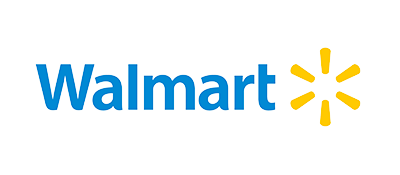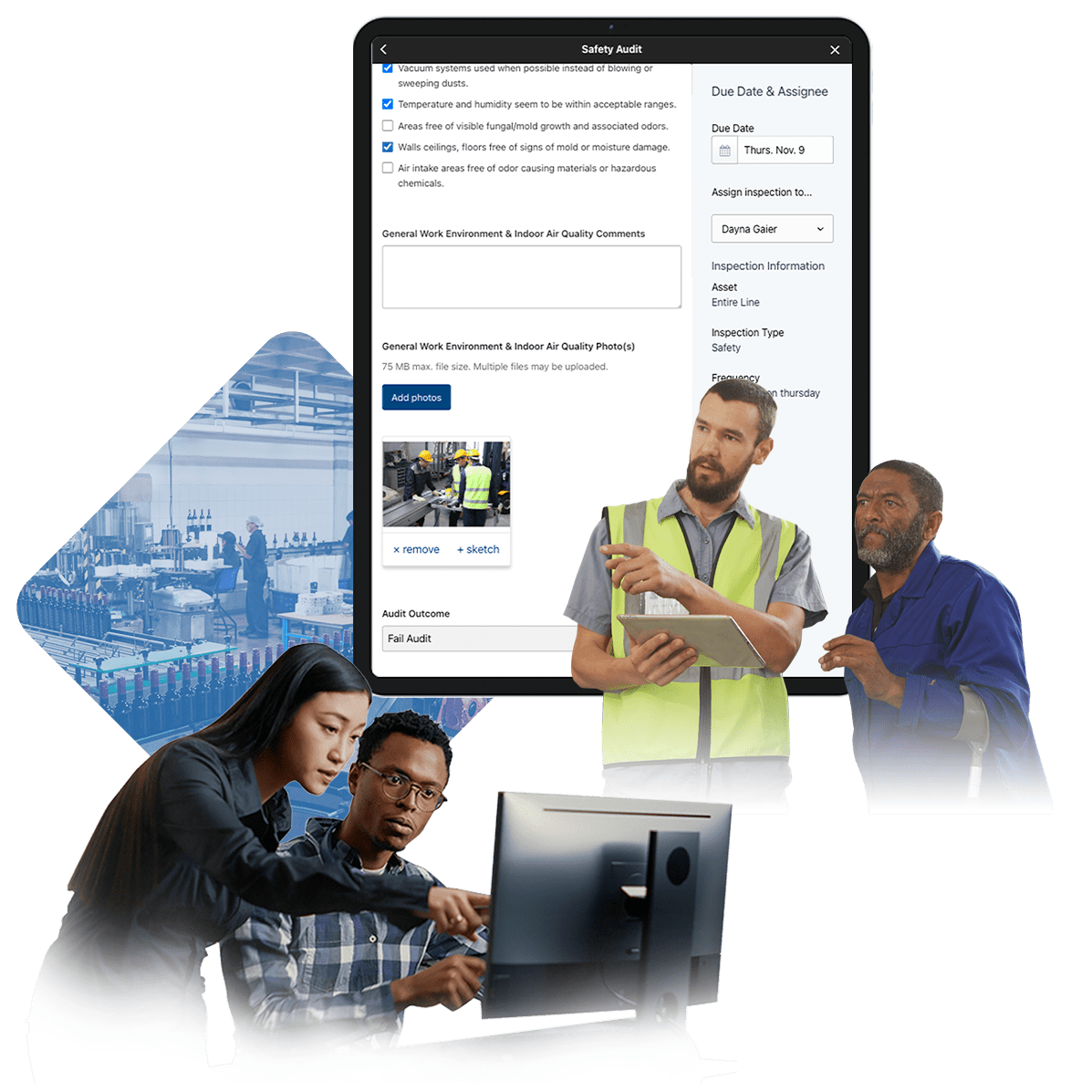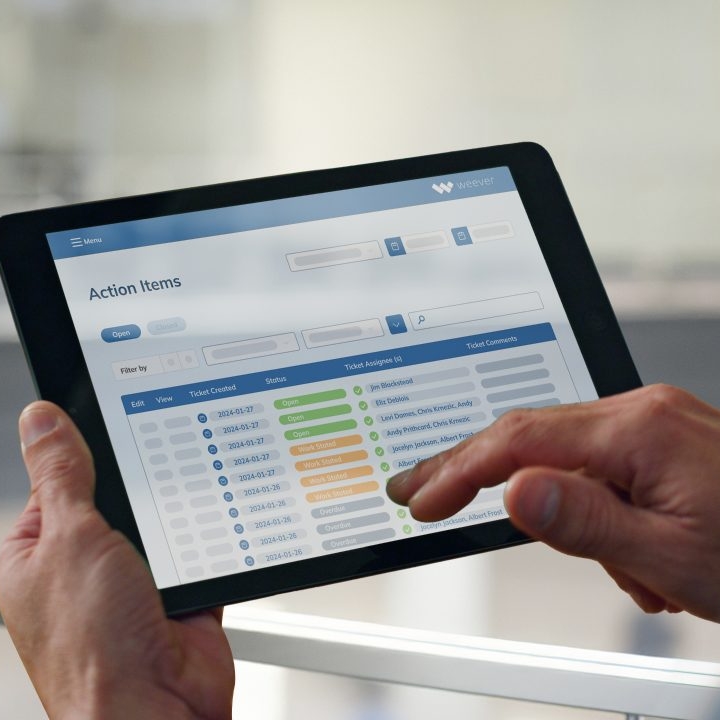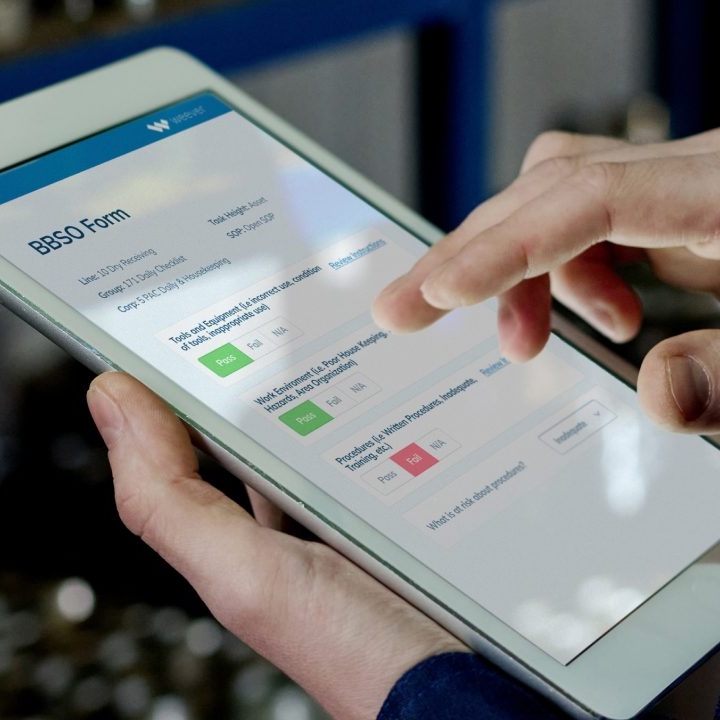How Weever Automates CIL Tasks to Streamline Maintenance Efficiency
Discover how Weever's visual controls simplify CIL processes, guiding operators to complete maintenance tasks efficiently while improving performance tracking.

Today, maximizing efficiency in manufacturing is key to maintaining a competitive edge. One area where inefficiencies often arise is in the management of Cleaning, Inspection, and Lubrication (CIL) tasks, which are crucial to ensuring optimal equipment performance. Traditionally, these tasks have been handled manually by operators, leading to inconsistencies, delays, and potential errors. But what if there was a way to automate these manual processes, ensuring standardized procedures and real-time visibility across the organization? This is where Weever's platform comes in. Let's explore how Weever can help streamline maintenance processes by automating CIL tasks and maximizing workflow efficiency.
The Importance of Streamlined CIL Processes in Maintenance
Effective CIL practices are essential for keeping machinery in top condition and preventing costly downtime. However, when CIL tasks are performed manually, it opens the door to inefficiencies and inaccuracies. Standardizing and digitizing these tasks can bring major benefits, including better time management, increased accountability, and improved machine performance. But how can this be achieved in practice?
Weever's Role in Automating CIL Tasks
Weever's platform offers a comprehensive solution that automates manual CIL tasks, making maintenance processes more efficient, organized, and transparent. Below, we'll explore how Weever's features address the common pain points associated with manual CIL tasks and present a clear path to workflow optimization.
1. Simplifying the Process for Frontline Workers
Weever's user-friendly interface is designed with frontline workers in mind, allowing them to easily automate tasks that were once manual, such as cleaning standards, inspection routines, and lubrication schedules. With Weever, operators can access digitized instructions and checklists, reducing the complexity of CIL tasks and making it easier to adhere to standard operating procedures (SOPs).
Operators often struggle to keep up with manual CIL tasks, especially in fast-moving environments where time is of the essence. Weever simplifies the process by providing standardized CIL checklists (CIL SOPs), visual controls, and easy access to digitized instructions. This helps operators perform tasks consistently and accurately, while ensuring they don't miss any critical steps in the CIL process.
By digitizing CIL instructions and providing connected platforms, Weever empowers frontline workers to carry out decentralized maintenance more effectively, reducing dependency on centralized maintenance teams and allowing tasks to be completed more quickly and efficiently.
2. Ensuring Accountability
One of the most powerful aspects of Weever's platform is its ability to automate workflows. This feature allows for seamless task assignment and scheduling, ensuring that operators know exactly what needs to be done and when. For example, Weever can automatically assign CIL action items, such as cleaning or lubrication tasks, to specific operators, with deadlines clearly outlined to ensure timely completion.
This level of automation eliminates the guesswork often associated with manual task management. Operators are held accountable for their tasks, while supervisors can easily track progress and ensure that no CIL task is left incomplete. This is especially important for maintaining a high standard of cleanliness, inspection routines, and lubrication schedules.
In addition, by using Weever's automated workflows, organizations can easily implement standardized CIL practices, ensuring that each operator follows the same protocols, no matter the shift or day. This consistency helps prevent machine breakdowns and prolongs equipment life.
3. Leveraging Data for Better Decision-Making
Weever's platform goes beyond task automation by providing valuable insights and trends derived from the data collected during the CIL process. By tracking CIL tasks and generating reports, Weever enables managers to monitor key performance indicators (KPIs) related to maintenance efficiency.
For instance, managers can track how often specific machines require cleaning or lubrication and adjust maintenance schedules accordingly. They can also identify bottlenecks in the workflow and pinpoint areas where improvements can be made.
By analyzing trends in maintenance data, organizations can adopt a preventive maintenance strategy, addressing potential issues before they lead to costly machine downtime. This proactive approach helps optimize overall workflow efficiency and reduces operational disruptions.
4. Increasing Transparency and Accountability
Transparency is crucial for any maintenance program, and Weever's real-time reporting feature ensures that everyone stays on the same page. Managers can instantly access reports on CIL task completion, giving them visibility into how well tasks are being executed and whether any delays or issues have arisen.
Weever's connected worker platform allows operators to update task statuses in real-time, ensuring that managers are always informed about the progress of ongoing maintenance activities. This level of transparency fosters greater accountability among frontline workers and reduces the likelihood of missed tasks or miscommunication.
With real-time reporting, organizations can also identify trends, such as recurring machine issues or operator delays, and take corrective action before small problems escalate into larger ones.
5. Ensuring Seamless Implementation of Automated CIL Workflows
Implementing a new system can be challenging, especially in large organizations with many moving parts. Weever's phased rollout methodology ensures a smooth transition from manual CIL processes to fully automated workflows.
Weever's team provides comprehensive training to ensure that operators and managers alike are comfortable using the platform. By rolling out the system in phases, Weever helps teams gradually adapt to the new processes without overwhelming them. This approach ensures that any issues are identified and addressed early in the implementation process, making it easier for the organization to fully embrace the new system.
Additionally, Weever's support team is available throughout the rollout process, providing ongoing assistance to ensure a seamless transition. This commitment to customer success helps organizations implement Weever's platform confidently, knowing that they will have the support they need to get the most out of the system.
Elevating Maintenance Efficiency with Weever
In an increasingly competitive manufacturing landscape, organizations cannot afford to let inefficiencies in CIL processes slow them down. By automating manual CIL tasks, Weever offers a powerful solution that improves maintenance workflows, enhances operator accountability, and provides valuable insights for continuous improvement. From ease of use to real-time reporting, Weever's platform is designed to streamline maintenance processes and drive operational efficiency.
Don't let manual CIL tasks hold your organization back. Discover how Weever's platform can help automate your maintenance processes and improve workflow efficiency today. Schedule a demo with Weever now and take the first step towards optimizing your maintenance operations.
Automate maintenance and boost efficiency with Weever's platform today
Automate maintenance and boost efficiency with Weever's platform today.
Continue Reading
"Having cloud-based forms on devices around the facility makes them so much more accessible, which makes it painless for operators to quickly provide a report."
Johanna Velez, VP Quality Assurance

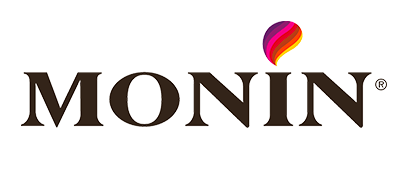
"Weever is really user friendly and will have a massive positive impact on our operations and training team."
Mel Cadle - Op Ex Lead Process Engineer

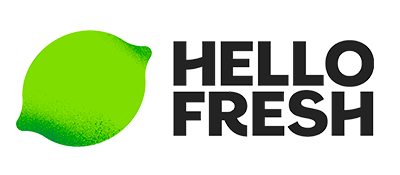
"It's shifted our safety culture because now we are much more focused on what we should be looking at."
Kody Crossen, Operations Manager of EHS

